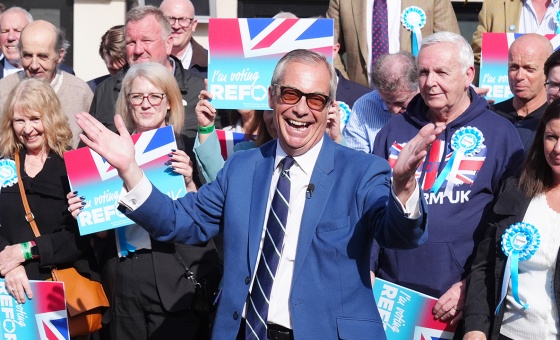This is the last article you can read this month
You can read more article this month
You can read more articles this month
Sorry your limit is up for this month
Reset on:
Please help support the Morning Star by subscribing here
Just 60 years ago, in the summer of 1954, South Africa’s prime minister and architect of apartheid Daniel Francois Malan and his ultra-racist National Party government had a real irritant and they needed to get rid of it.
The thorn in their side was Sophiatown, the multiracial cultural suburb of Johannesburg that, more than anywhere else, showed up the barrenness and nonsense of the obscene apartheid system.
One Sophiatown resident, a young local lawyer called Nelson Mandela, summed up the attraction of the place in the 1950s: “Despite the poverty, Sophiatown had a special character. For Africans it was the Left Bank in Paris, Greenwich Village in New York, the home of writers, artists, doctors and lawyers.”
At this time South Africa was still part of a British empire on which the sun never set. The apartheid government came up with a cunning strategy. They passed a law called The Natives Resettlement Act. The purpose of this law was simply to destroy Sophiatown.
The new and crude law was just the thin veneer of respectability the government needed. In the next few months the iron fist would replace the velvet glove.
Thousands of armed police with their British-made sten-guns, rifles and clubs swooped down on Sophiatown in their British-built military Land Rovers to forcibly evict its 60,000 black inhabitants.
Some blacks tried to fight back but it was of little use. Most of the inhabitants were moved to a new township much further from Johannesburg. It was named the South West Township but it would itself become a legend as Soweto.
At least one white man spoke out against the outrage. “When Sophiatown is finally obliterated and its people scattered, I believe that South Africa will have lost not only a place but an ideal.”
That man was Bedford-born ANC activist and Anglican priest Trevor Huddleston.
Sophiatown was one of the oldest black areas in Johannesburg. Despite the crime, violence and poverty, it became the multicultural epicentre of politics, jazz and blues and the arts during the 1940s and 1950s.
It produced some of South Africa’s most famous writers, musicians and artists as well as politicians and activists. Life in Sophiatown has been compared to what Harlem was to New York in the 1920s.
By the mid-50s the exciting South African jazz movement was in full swing and centred in Sophiatown at locations like the famous Odin Cinema, the largest in Africa, and not just a picture house but also a venue for jazz concerts and political meetings.
Musicians who would later become legends like Hugh Masakela learned his trumpet playing in Huddleston’s boy’s church jazz band, and many others honed their talents in Sophiatown’s many clubs and illegal drinking clubs and home breweries known as sheebeens.
Another legend was Miriam Makeba. She made one of her earliest records, Meadowlands, as a brave protest against the Sophiatown outrages themselves.
Influential South African writers including the pioneering Drum magazine journalists Henry Nxumalo, Nat Lakasa and Carl Themba also lived in and reported on Sophiatown. Many would be censored and banned under suppression of communism laws.
Photographers like Bob Gusani and Ernest Cole captured life on film while Gerard Sekoto painted the township’s vibrant street scenes.
The list of Sophiatown’s residents reads like a Who’s Who of African Liberation: Ruth First, Joe Slovo, Trevor Huddleston, Helen Joseph, Oliver Tambo, Dr AB Xuma, Desmond Tutu and of course Nelson Mandela. The list could go on forever.
Many of them would speak at public meetings in Sophiatown’s Freedom Square. That square would give its name to another Freedom Square in Soweto where in 1955 the ANC launched its Freedom Charter.
It was at a meeting in Freedom Square, Sophiatown, that Mandela first called for the ANC to take up armed resistance against racial segregation.
Less than 10 years later the whole colourful and lively place had gone, flattened, razed to the ground and replaced by a boring white suburb that the apartheid authorities, in an act crass even for them, named Triumph — or Triomf in Afrikaans.
This was no triumph — it was one of the greatest acts of cultural and political vandalism and spiteful destruction the world had ever seen.
Over 40 years later in 2006, in Mandela’s Rainbow Nation, the area was symbolically once again officially re-named Sophiatown by the ANC government.
At that time Johannesburg city mayor Amos Masondo told a huge crowd: “Sophiatown was never erased from the hearts and minds of the people.
“It’s very name evokes memories of a vibrant, creative and multicultural community where artists, writers and musicians flourished, against the odds, in an atmosphere of racial tolerance.
“Long before Soweto, Sophiatown was where urban culture found its pulse and rhythm.”








